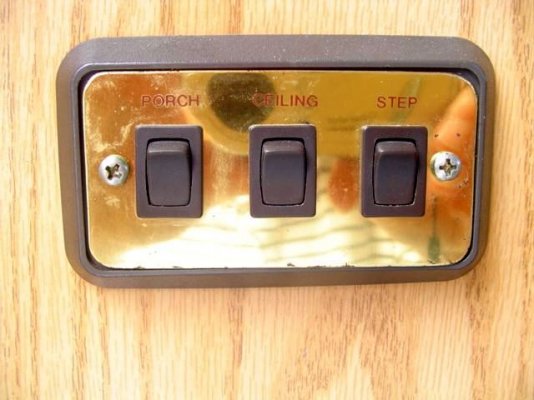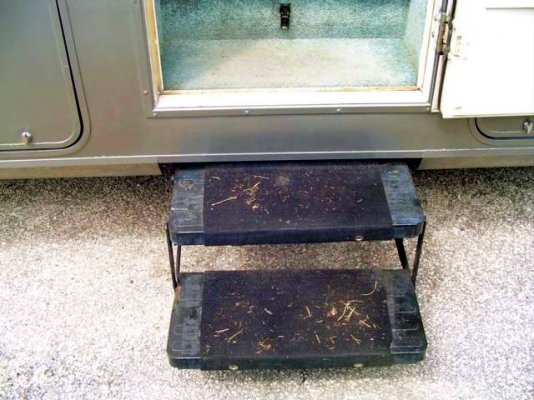I haven't seen any reference to the Trik-L-Charge in my manuals yet, but I'm still browsing. I suspect it
does not have this feature as the chassis battery has already died once and required the booster to get started even though it has spent many months plugged-in in an indoor showroom. After we picked it up, we stopped for lunch and I left the headlights on (rainy day). (And why doesn't it have a reminder buzzer for the headlights?) In the time it took to eat a fast-food lunch, the chassis battery was too low to crank the engine. I'm debating whether to ask the dealer for a new chassis battery. I'm going to charge it a bit and see what it does.
Another thing the dealer had wrong was operation of the slides. The salesman and the walk-through technician both ran the slides with the engine off. From what I've read elsewhere and in the manuals, the slides should not be run without the engine running. I'm not sure whether the slides are powered off the chassis or house batteries, but if the chassis, then that might explain why it was so low to start with.
Energy management systems seem to have gotten started in the middle 1990s. My '96 Bounder had one. I also broke into the wiring on that one and rigged it to run a second shore power connection to run my rear air. That worked quite well, though I know tinkering with the wiring like that sets off a lot of people, so no flames please.
I think I eventually want to rig a second line on my new Sightseer, but I need to learn some more details about its wiring. The Sightseer has a switch in the cabinet under the refrigerator to select the power source for the rear air. The choices are generator and shore line. I suspect that I can set the switch to generator and locate 20-amp circuit off of the generator and break in there as I did on my Bounder. I didn't even start into this with the technician on our walk-through, but he did say that you can be connected to shore power, set the switch to generator, and then run the front and rear air together that way.
I think the air conditioners on the '09 model (and the last several years too) are high-efficiency, so I expect they can be run together as long as nothing else is drawing much power. They are both 13,500 BTU units, which concerns me a little... my Bounder had a 15,000 BTU unit up front and it didn't keep us especially cool, but it was also old and probably had a slow leak as someone had previously installed a valve to add refrigerant (originally sealed systems). We'll see how it does this summer.
I appreciate the input. I can't get out and camp in it just yet, so I'm getting my fill by chatting about it.



